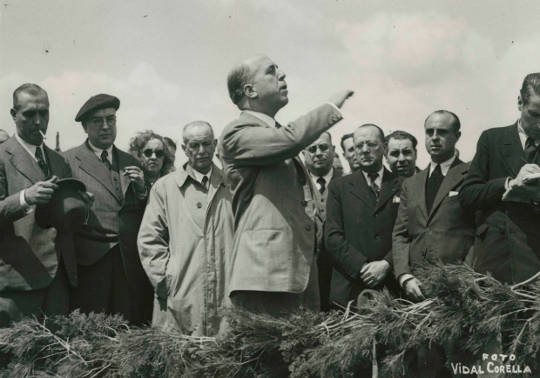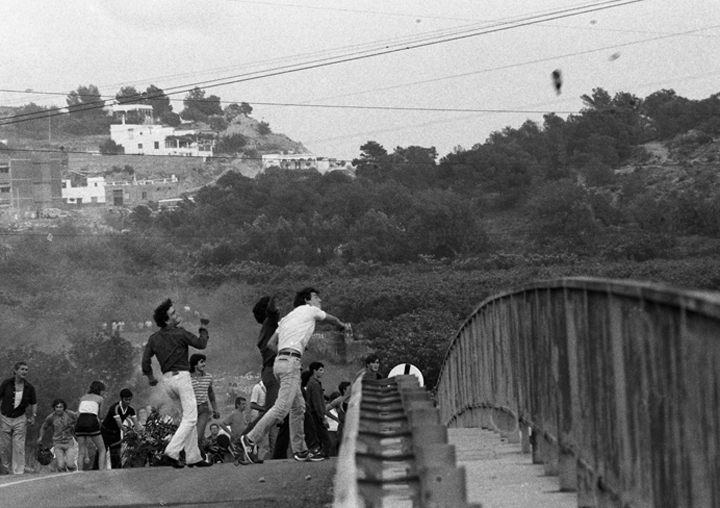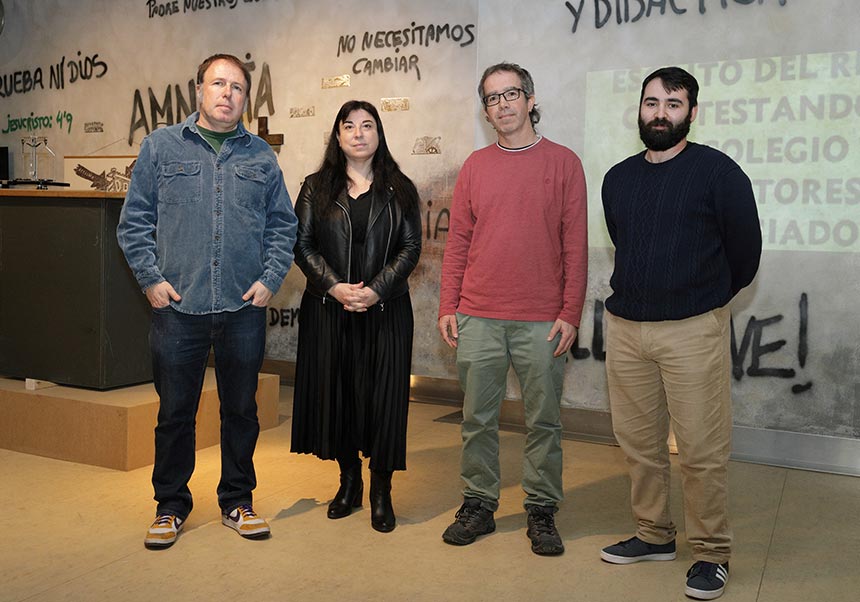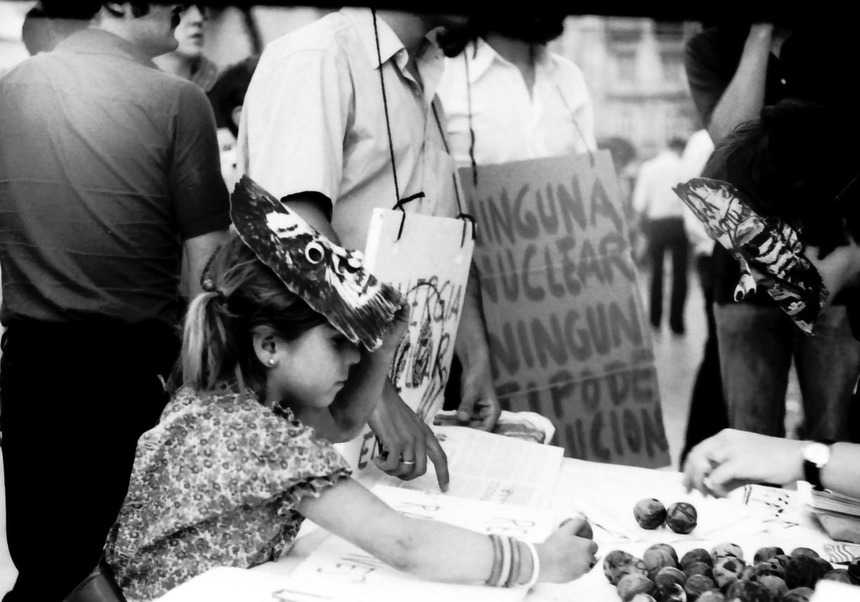The Universitat de València remembers the great national exhibition of public works held in 1937 with a display at La Nau
- Office of the Vice-Principal for Culture and Society
- September 22nd, 2017

The Universitat de València inaugurates at La Nau this Monday, 25th September, at 12:30, the exhibition ‘València/1937 La Exposición Nacional de Obras Públicas’, which is organised by the ‘Demetrio Ribes’ Chair. In the framework of the programmed activities by the UV on the occasion of the 80th anniversary of València as a capital of the Republic period, the display shows through photographs, posters and the press, the great national exhibition of public works that La Lonja hosted in 1937.
The exhibition ‘València/1937 La Exposición Nacional de Obras Públicas’, that has the support of the Vice-Principal for Culture and Equity, will be shown at Sala Oberta until the next 22nd October. The Vice-Principal for Culture and Equality, Antonio Ariño; the Vice-Principal for Internationalisation and Cooperation of the UV, Guillermo Palao; the Regional Secretary of Housing, Public Works and Structuring of the Territory, Josep Vicent Boira; and the art historian and responsible of the ‘Demetrio Ribes’ Chair, Luis Arciniega.
The coordinator, Susana Climent, remembers the great exhibition of 1937: ‘On 11th June 1937 the great national exhibition of public works organised by the former ministry of Public Works Juli Just was inaugurated at La Lonja. The display showed the experiences of several Governments: the republican and socialist two-year period, the conservative one and the Frente Popular government. These backgrounds are useful to contextualise the debates that went further than engineering matters generated by the Republican policy of public works’.
According to Climent, that exhibition celebrated in a war and revolution context ‘had a political character’. ‘The image and the account of the exhibitions played the same role that meetings, speeches and conferences. It performed two roles: to show the Republican plan of alterations in an educational way -highlighting among the public works the hydraulic ones that were linked to the agrarian reform- with a strong moral and advertising background; as well as to reach the masses, which thanks to the democratic system took part in the debate’.
‘València/1937 La Exposición Nacional de Obras Públicas’ is divided into four sections. It underlines the political nature of the 1937 exhibition, which is part of the reformist republican rhetoric. It analyses the effects of the exhibition in relation to the internal and external propaganda of the besieged Republic period, which aimed to centralise the war effort in all orders and to break the Non Intervention agreement between the European democratic powers. It emphasizes the works exhibited in the difficult year of 1937 through the existent photographs, press and posters; and it reflects on what could be exhibited through the study of its backgrounds: the Exposición Gráfica del Plan Nacional de Obras Hidráulicas in February 1934; the stand of Spain at the 7th International Congress of Roads held in Munich in September 1934; the 5th National Congress of Watering in September 1934; and finally, the failed project of the 1st National Congress of Public Works and its exhibition, scheduled for November 1936. Finally, it reflects on the continuity, even in exile, of the rhetoric that was intended to promote: the creative impulse of the Republic period in all areas of social life.
The exhibition is distributed in 17 boards and shows unpublished photographs of the original exhibition, its wide diffusion in the press, the magnificent posters that advertised it, as well as three posters repaired by the ‘Demetrio Ribes’ Chair, original from 1936, referring to the most direct precedent of the 1937 exhibition, the First National Congress of Public Works that the coup d’etat failed.
File in: Cultura , Exposicions , Càtedres , Fundació General UV
















